Video of the Week:
Growing Asparagus
Vegetables:
Tomato Trial
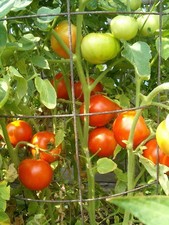
The data below is from an average of all three years. We list both yield in pounds per plant and individual fruit size in ounces.
Lbs/Plant Ounces/Fruit
Celebrity 14.66 6.25
Beefmaster 12.84 7.56
Crista 12.71 6.18
Big Beef 12.60 6.37
Hy-Beef 12.33 5.50
Jet Star 10.76 5.65
Rutgers 10.43 4.31
BHN 961 9.82 7.06
Black Krim 9.69 6.62
Florida 91 9.25 6.63
Supersonic 8.69 6.62
Amana Orange 6.58 11.82
These are all modern varieties except for the heirlooms Amana Orange, Rutgers and Black Krim.
Remember these results are from north of Kansas City and include only 12 varieties. Variety performance differs by location. New gardeners or those that want to try a new tomato variety should use this list as a guide. However, pay attention to what other local gardeners have had good success with and to the recommendations of your local garden center. They may be able to point to a variety that does especially well in your area. (Ward Upham)
Bolting and Buttoning in Cole Crop Plants
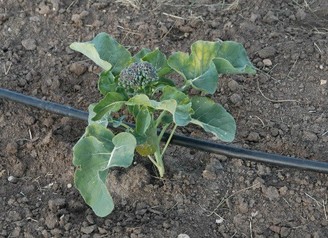
If you are not growing your own transplants but rather selecting plants from a retailer, choose small, stocky dark green plants. Even after transplanting, these plants need to be well-fertilized. Fertilize at transplanting with a starter solution and continue to fertilize every 2 to 3 weeks until harvest. Both buttoning and bolting are irreversible. Once a seed stalk starts for form, nothing can be done to force the plant to produce a normal crop. (Ward Upham)
Pruning:
Cut Back Ornamental Grasses
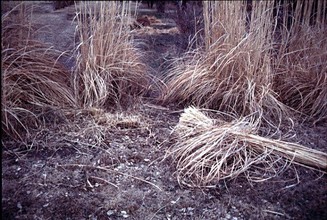
Also, it is often helpful to tie foliage together before cutting so it doesn't interfere and is easier to dispose of. Burning is another option — but only if it is safe and legal to do so. Note that these grasses may not burn long, but they burn extremely hot. Even so, the crown of the plant is not damaged and new growth appears relatively quickly.
If the center of the clump shows little growth, the plant would benefit from division. Dig up the entire clump and separate. Then replant the vigorous growth found on the outer edge of the clump. (Ward Upham)
Pruning Deciduous Shrubs
Deciduous shrubs are placed into three groups:
• Those that flower in the spring on wood produced last year;
• Those that flower later in the year on current seasons’ growth; and
• Those that may produce flowers, but those flowers are of little ornamental value.
Shrubs that flower in the spring should not be pruned until immediately after flowering. Though pruning earlier will not harm the health of the plant, the flowering display will be reduced or eliminated. Examples of these types of plants include forsythia, lilac, flowering quince, Vanhoutte spirea, bridal wreath spirea and sweet mockorange.
Shrubs that bloom on current seasons’ growth or that do not produce ornamental flowers are best pruned in March. Examples include Rose-of-Sharon, pyracantha, Bumald spirea, and Japanese spirea. Pruning during the spring allows wounds to heal quickly without threat from insects or disease. There is no need to treat pruning cuts with paints or sealers. In fact, some of these products may slow healing.
There are three basic methods used in pruning shrubs: thinning, heading back, and rejuvenating.
Thinning is used to thin out branches from a shrub that is too dense. It is accomplished by removing most of the inward growing twigs by either cutting them back to a larger branch or cutting them back to just above an outward- facing bud. On multi-stemmed shrubs, the oldest canes may be completely removed.
Heading back is done by removing the end of a branch by cutting it back to a bud and is used for either reducing height or keeping a shrub compact. Branches are not cut back to a uniform height because this results in a "witches-broom" effect.
Rejuvenation is the most severe type of pruning and may be used on multi-stem shrubs that have become too large, with too many old branches to justify saving the younger canes. All stems are cut back to 3- to 5-inch stubs. This is not recommended for all shrubs but does work well for spirea, forsythia, pyracantha, ninebark, Russian almond, little leaf mock orange, shrub roses and flowering quince. (Ward Upham)
Miscellaneous:
Repotting Houseplants
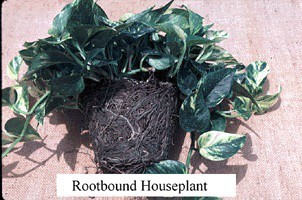
To check if your plants are becoming root bound and need a larger pot, inspect the root system. First, knock the plant out of its pot. Watering several hours before this operation will allow the plant to be removed more easily. On pots that are 8 inches in diameter or less, place one hand over the top of the pot with the stem of the plant passing between two fingers, and turn the plant upside down. Then rap the edge of the pot against a table. The root ball should come away from the pot. On pots that are more than 8 inches in diameter, a bit more encouragement may be needed. Place the pot on its side and rap the top edge of the pot with a rubber mallet. Turn the plant a few degrees, and repeat the procedure until the root ball releases.
Once the plant is free, take a look at the root ball. If you see a clear network of roots, the plant needs to be moved to a larger pot. If the original pot is less than 10 inches, move up an inch in size; if 10 inches or larger, increase the size 2 inches. If the pot has one or several large holes in the bottom for drainage, cover the holes with pot shards (pieces of a broken clay pot) or gravel so that the potting mix is not washed out during watering.
It is essential that the plant sit at the same level it was in the old pot. Add enough potting mix to the bottom of the pot to ensure this. This mix will need to be firmed before the plant is placed on top of it so it doesn't settle over time. After the plant is placed, fill in around the original root ball with potting soil. Again, firm this soil with a slender stick, or tap the bottom of the pot on the table. If this firming is not done, new soil will be so light and airy that water will tend to move through it rather than through the entire root ball.
Water the plant thoroughly after repotting, but be especially careful not to overwater for about two weeks. The new soil tends to stay wet until roots penetrate. Overwatering can lead to rot. Most plants need to be repotted annually though vigorous growers may need to move up sooner. Slow-growing plants may stay in the same pot for more than a year. (Ward Upham)
Plants Breaking Dormancy Early
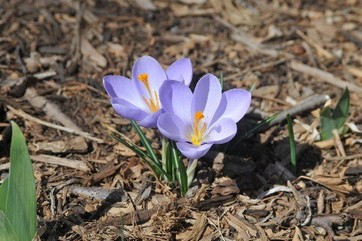
Plants differ in the number of chilling hours needed, with those adapted to colder climates usually requiring more than those adapted to warmer zones. Even plants within the same species can differ markedly in the number of chilling hours required for bud break. For example, apple varieties range from a low of 250 (or fewer) chilling hours to a high of 1700.
The chilling requirements of some plants have been met already this winter. For these plants, dormancy is over and warm periods can lead to bud swell or even flowering. If spring-flowering bulbs flower now, the floral parts may be damaged by a cold snap but the plants itself will likely be OK. It all depends on the severity of the cold snap.
So what do you do if you have a plant that has swollen buds? Actually, there is not much you can do to slow the bud development process because it is completely dependent on weather. However, watering during dry weather may help in an indirect way. Roots can suffer drought damage during the winter. A tree with a damaged root system and damaged buds will be slower to recover than one with just damaged buds. Readily available soil moisture will aid in keeping the plant healthy so it will be better able to recover from cold damage. Also, it is important to determine if the swollen buds are flower buds or leaf buds. Even if the flower buds are killed by cold temperatures, the health of the plant should not be affected. If, in addition to the swollen buds, you also see small buds on the stems, then the swollen buds are flower buds and the small buds are leaf buds.
Leaf buds are more hardy than flower buds but even they can be killed if they have lost their winter hardiness. Even if the leaf buds swell and are killed by a cold snap, a healthy tree will still be able to survive. There are secondary buds that remain dormant unless the primary bud is killed. Secondary bud growth may be slower and less vigorous, but the tree will eventually recover. (Ward Upham)
Contributors: Ward Upham, Extension Associate
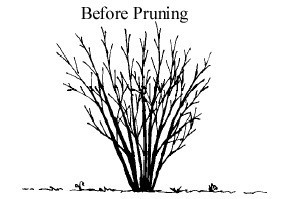
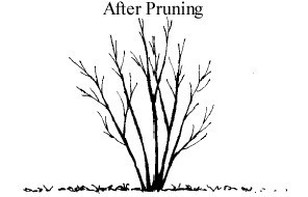
 RSS Feed
RSS Feed
